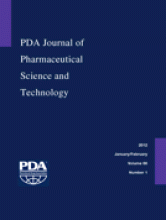Abstract
Essentially any concept of risk is built on fundamental concepts of chance, likelihood, or probability. Although risk is generally a probability of loss of something of value, given that a risk-generating event will occur or has occurred, it is ironic that the quality risk management literature and guidelines on quality risk management tools are relatively silent on the meaning and uses of “probability.” The probability concept is typically applied by risk managers as a combination of frequency-based calculation and a “degree of belief” meaning of probability. Probability as a concept that is crucial for understanding and managing risk is discussed through examples from the most general, scenario-defining and ranking tools that use probability implicitly to more specific probabilistic tools in risk management. A rich history of probability in risk management applied to other fields suggests that high-quality risk management decisions benefit from the implementation of more thoughtful probability concepts in both risk modeling and risk management.
LAY ABSTRACT: Essentially any concept of risk is built on fundamental concepts of chance, likelihood, or probability. Although “risk” generally describes a probability of loss of something of value, given that a risk-generating event will occur or has occurred, it is ironic that the quality risk management literature and guidelines on quality risk management methodologies and respective tools focus on managing severity but are relatively silent on the in-depth meaning and uses of “probability.” Pharmaceutical manufacturers are expanding their use of quality risk management to identify and manage risks to the patient that might occur in phases of the pharmaceutical life cycle from drug development to manufacture, marketing to product discontinuation. A probability concept is typically applied by risk managers as a combination of data-based measures of probability and a subjective “degree of belief” meaning of probability. Probability as a concept that is crucial for understanding and managing risk is discussed through examples from the most general, scenario-defining and ranking tools that use probability implicitly to more specific probabilistic tools in risk management.
- © PDA, Inc. 2012
PDA members receive access to all articles published in the current year and previous volume year. Institutional subscribers received access to all content. Log in below to receive access to this article if you are either of these.
If you are neither or you are a PDA member trying to access an article outside of your membership license, then you must purchase access to this article (below). If you do not have a username or password for JPST, you will be required to create an account prior to purchasing.
Full issue PDFs are for PDA members only.
Note to pda.org users
The PDA and PDA bookstore websites (www.pda.org and www.pda.org/bookstore) are separate websites from the PDA JPST website. When you first join PDA, your initial UserID and Password are sent to HighWirePress to create your PDA JPST account. Subsequent UserrID and Password changes required at the PDA websites will not pass on to PDA JPST and vice versa. If you forget your PDA JPST UserID and/or Password, you can request help to retrieve UserID and reset Password below.






